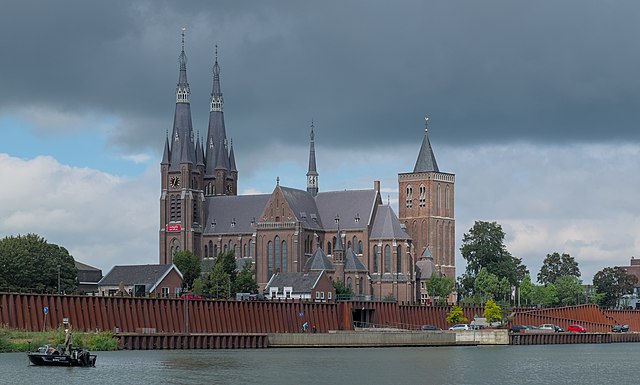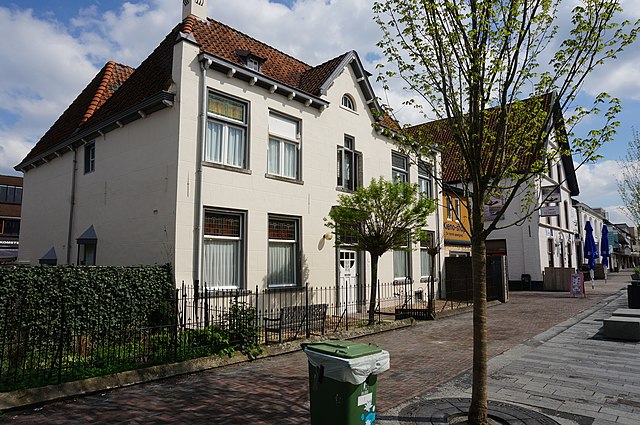Netherlands in the Roman era
For around 450 years, from around 55 BC to around 410 AD, the southern part of the Netherlands was integrated into the Roman Empire. During this time the Romans in the Netherlands had an enormous influence on the lives and culture of the people who lived in the Netherlands at the time and (indirectly) on the generations that followed.
Reconstruction of a Roman watch tower near Fectio in the Netherlands
The Conspiracy of Julius Civilis, completed in 1661 by Rembrandt, the best-known painter of the Dutch Golden Age. It depicts a Batavian oath to Gaius Julius Civilis, the head of the Batavian rebellion against the Romans in 69
Cuijk is a town in the northeastern part of the province of North Brabant, Netherlands. It is the successor of a Roman settlement on the west bank of the Meuse, 13 km (8.1 mi) south of Nijmegen. Cuijk, which had a population of 18,170 as of 2020, was the centre of an eponymous municipality, which ceased to exist on 1 January 2022, when it was replaced by the larger Land van Cuijk municipality.
St. Martin's Church dominates the skyline on the Meuse
Statue of Jan I van Cuijk
Cigar factory Kansas
Former factory (right) and house (left) Regouin tannery






